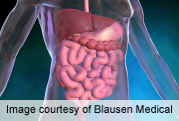Low versus high UV areas have higher rate of diverticulitis admissions, diverticular abscess
THURSDAY, Jan. 22, 2015 (HealthDay News) — Lower ultraviolet (UV) light is associated with increased rate of diverticulitis admissions, according to a study published online Jan. 21 in JAMA Surgery.
Noting that low circulating vitamin D levels are associated with diverticulitis, Lillias H. Maguire, M.D., from Massachusetts General Hospital in Boston, and colleagues examined the correlation between UV light and diverticulitis. Geographic and seasonal trends were assessed among 226,522 nonelective admissions for diverticulitis, identified in the Nationwide Inpatient Sample.
Compared with high-UV areas, the researchers found that low-UV areas had a higher rate of diverticulitis (751.8 versus 668.1 per 100,000 admissions; P < 0.001), diverticular abscess (12.0 versus 9.7 percent; P < 0.001), and colectomy (13.5 versus 11.5 percent; P < 0.001). Significant seasonal variation was observed, with a lower rate of diverticulitis in the winter versus the summer (645 versus 748 per 100,000; P < 0.001). In areas with the greatest UV fluctuation versus areas with the least UV fluctuation, the summer increase was more evident (120 versus 70 per 100,000; P = 0.01).
“Because UV exposure largely determines vitamin D status, these findings support a role for vitamin D in the pathogenesis of diverticulitis,” the authors write.
Copyright © 2015 HealthDay. All rights reserved.








